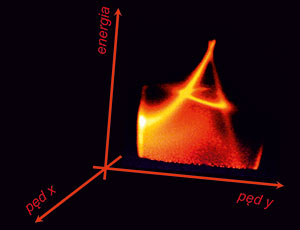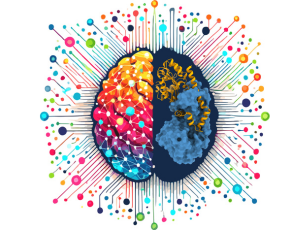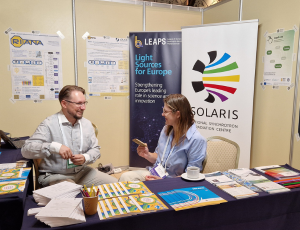 Web Content Display
Web Content Display
SOLARIS centre
 Web Content Display
Web Content Display
The first measurement in the UARPES end-station

On 1 June 2016, Piotr Ciochoń (the Faculty of Physics, Astronomy and Applied Computer Science of the Jagiellonian University - WFAiIS), Mariusz Garb (WFAiIS), Karolina Szamota-Leandersson (SOLARIS) and Jacek Kołodziej (WFAiIS and SOLARIS) did, for the first time, a typical experiment for which UARPES beamline had been designed.
The massively parallel angle-resolved photoelectron spectroscopy mode were tested. An electronic structure around a so called Dirac point were measured for a graphene sample.
In the used measurement mode the energy spectra of photoelectrons excited with a monochromatic light are recorded along a large number of directions contained in some solid angle chosen. Taking into account the photoelectron energy andelectron emission angles one calculates the photoelectron momentum easily. Due to basic conservations rules simple relationships exist between the energy and momentum of measured photoelectrons and binding energy and wavevector that the electron had inside the solid, before the photoelectric event took place.
Measurements of that kind are done to determine electronic structure of materials experimentally. The electronic structure is essentially a set of bands of states - therefore it is alternatively called the band structure. Such measurements are extremely important since all physico-chemical properties of materials (mechanical, optical, electrical, thermal etc.) are determined by the electronic band structure.
Electronic bands are composed of many quantum states. Each one of the states is described by unique combination of quantum numbers: energy, momentum vector (or alternatively a wave vector) and spin. Given electronic band corresponds to some geometric figure in the momentum-energy space. Its dimensionality may be obtained as the dimensionality of the momentum space +1 (The spin may have only discrete values ±1/2, so it may double, in the nondegenerate case, the number of electronic bands but it does not influence their dimensionality). For example graphene electrons are confined to a plane. Their momentum space is thus two-dimensional while electronic bands correspond to three-dimensional figures – see the illustration.
In the illustration you can see fragment of the electronic band for graphene [the graphene sample was obtained via graphitization of SiC(0001)] measured at UARPES. To make the three dimensional figure visible it is cut with two planes. This fragment of the graphene band structure is called the Dirac cone. The apex of the cone is known as the Dirac point. Around this point the graphene electrons mimic masless particles – their energy-momentum relation is linear just as the one for photons. Experimental parameters: electron current in the storage ring: 40 mA (8%of the nominal value); the measurement time: 4 h 17 min; the photon beam resolution ~50 meV; the spectrometer energy resolution ~20 meV; the sample kept at the room temperature.
In summary, the UARPES beamline ability to record photoelectron spectra in massively parallell mode has been confirmed. Effectively ~20 000 angle-resolved spectra were measure in acceptable time. The photon beam resolution was not high, however, the test was done using rather low storage ring filling and not yet fine-tuned beamline. We estimate that the time needed to record comparable set of data with very high energy resolution (1 meV) will be similar, when the beamline is finally tuned and the nominal stored current is reached.



